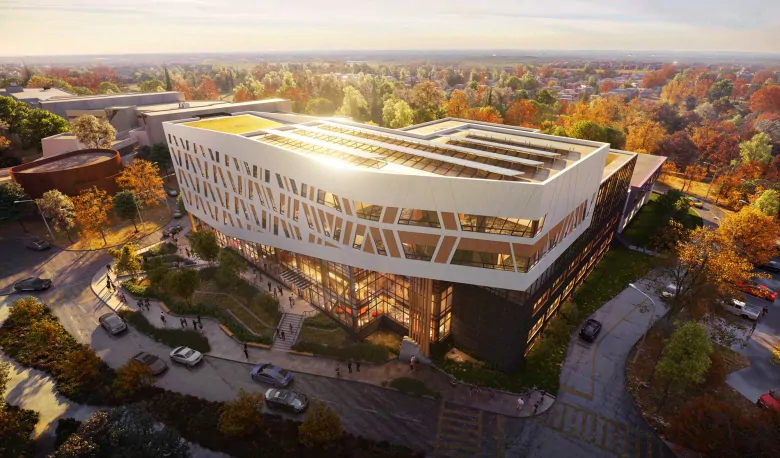In this week’s issue of our environment newsletter, we look at the nature-based philosophy of Indigenous architecture and explore one of the Atlantic Ocean’s big mysteries: ‘the cold blob.’

Hello, Earthlings! This is our weekly newsletter on all things environmental, where we highlight trends and solutions that are moving us to a more sustainable world. (Sign up here to get it in your inbox every Thursday.)
This week:
- Why Indigenous architecture is ‘a positive force that supports nature’
- The ‘cold blob’: A deeper dive into a strange corner of the Atlantic Ocean
- What on Earth is now a radio show, too!
Why Indigenous architecture is ‘a positive force that supports nature’

In recent years, there has been a movement toward more environmentally conscious architecture. But Eladia Smoke, founder and principal of Hamilton, Ont.-based Smoke Architecture, has long subscribed to this philosophy. Anishinaabekwe from Obishikokaang/Lac Seul First Nation, Smoke creates designs inspired by the natural world and grounded in Indigenous teachings. The firm’s projects include a redevelopment of the Aboriginal Peoples Television Network headquarters in Winnipeg and a planned revamp of a Centennial College campus in Toronto (photo above). Andre Mayer spoke to Smoke about the connections between nature and the built environment.
Your work has a reverence for nature. Has the pandemic taken that a step further?
Absolutely. The thing about crisis is that crisis demands resilience. And nothing is more resilient than the principles that were developed on this continent during the course of many millennia prior to contact [with European settlers]. Those principles have to do with a diversity of life.
Oftentimes, we view our built environment as different or separate from the natural environment. There is no reason that has to be the case. Millions of people lived on this continent before contact, but you barely even knew that they had lived here because the impact was so minimal. In fact, we’ve always viewed human life and our built environment as a positive force that supports nature. That’s an Indigenous view of the built environment – it’s actually regenerative.
What would be an example in your work?
For instance, at Centennial College, we were sure to always include Indigenous plantings around the building, including some of the plants that are representative of some of the most important plants to our historical uses. We’re also very careful to create views from as many places in the building as possible, including even the lowest levels, to plants that we would recognize.
There’s a strong nature element to the community centre and roundhouse project for Henvey Inlet First Nation in northern Ontario.
Henvey is in a process of change — they’ve just built a wind farm, and that’s what’s actually funding this project. They harvested some of the wood from the clearing that was required for the wind farm, and stockpiled it — we’re hoping we can use it to build the roundhouse.
They’re in a stage of transition, so instead of the static form that you see for roundhouses, which is very octagonal and very stable … this is a dynamic form. At each point of the roof there are these poles that support the roof – 13 of them. Thirteen is a very significant number for Anishinaabe. We understand 13 to be the number of moons in a year, the number of plates on a turtle’s back, and we live on Turtle Island, 13 ribs on a woman, who represents the mother. Thirteen poles support that roof, and it connects back to the earth.… It’s as though the change that is happening in Henvey Inlet grows from a deep understanding of the land.
How do you capture that connection to nature in urban settings?
It’s so hard when you don’t have any land around you to regenerate. [Laughs] That’s tough.
The centre of the [APTN building] is a drum…. The drum was symbolic of APTN’s broadcast to the nation. However, it was also that the drum is very important in Anishinaabe thought — it represents a realignment of one’s own heart with the rhythms and cycles of nature.
The Centennial building also has a heart to the building. In the centre is the Indigenous Commons, and it’s a dome-shaped space designed around the principles of the Niimii’idiwigamig, which is the Anishinaabe roundhouse, and that’s a space for drum ceremonies. That drum and that space connect with many of the nature points of interest in the building. It connects with that interior courtyard, where we have those plantings. If you go out the door of the Indigenous Commons, you’re right at this nature circulation corridor through the building, which has a mirror in an outdoor planted Indigenous garden.… That corridor mimics the topography of the garden outside, so you almost feel

